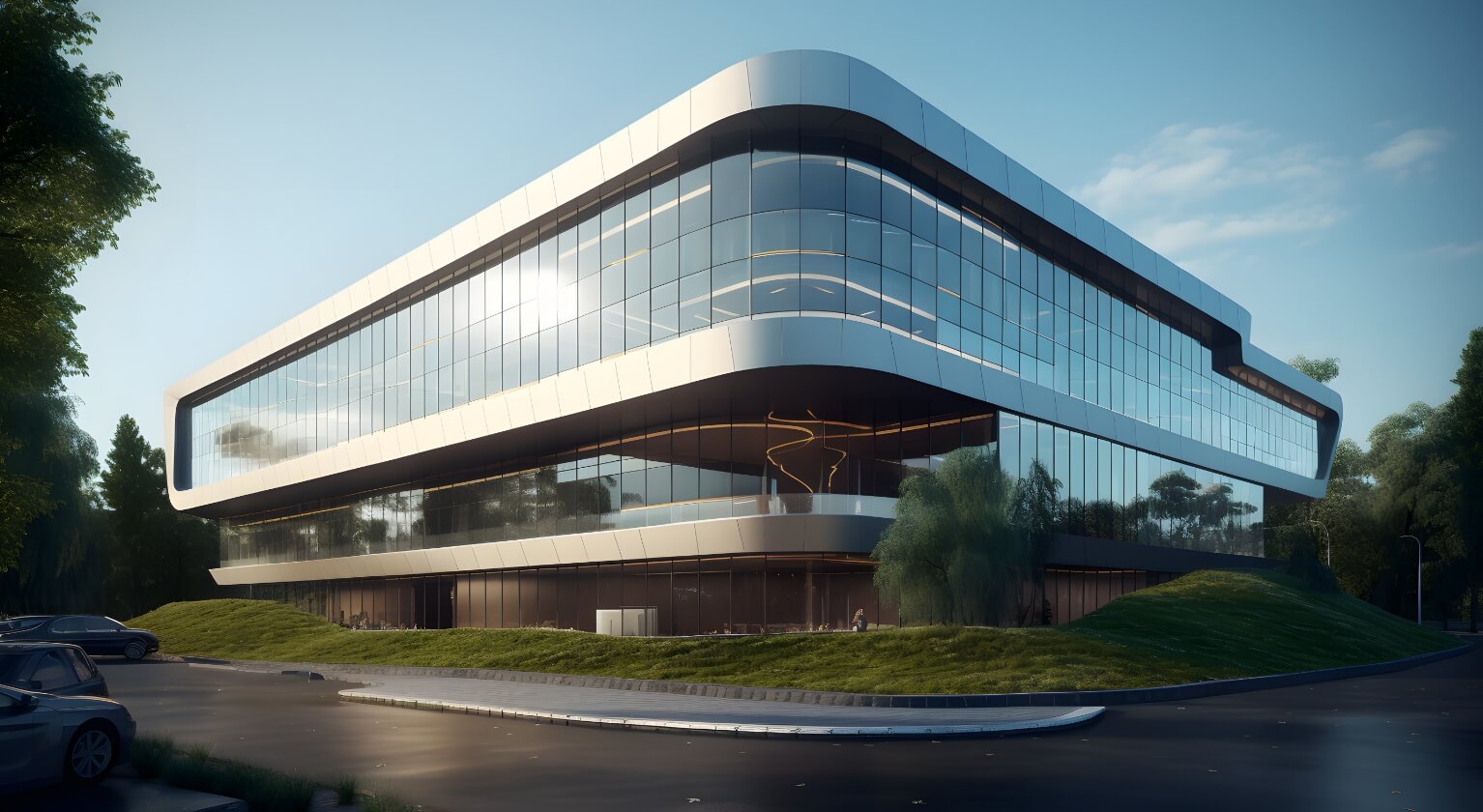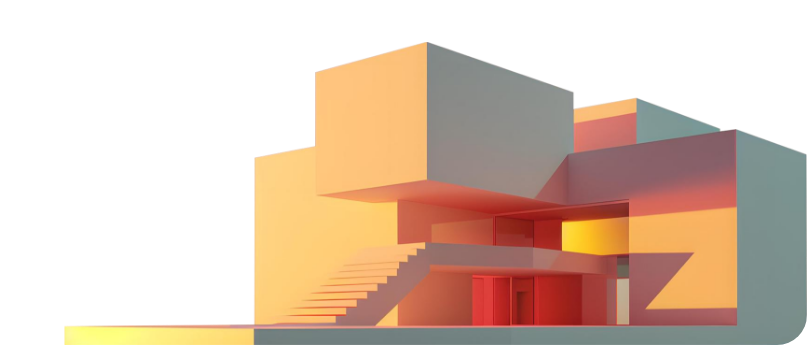 Him Darji
Him DarjiBeneficial Reasons for BIM Modeling in Modern Architecture
 Him Darji
Him Darji
Send Us Your Requirement
Technological and innovative advancements have pushed the industry to achieve its goals in the ever-growing landscape of architecture and construction. Also, staying abreast of the latest technology is one way to remain competitive in the market and for professionals to seek new design, construction, and creativity horizons. Traditionally, the construction sector heavily relied on hand-drawn sketches, long working hours, dependency on resources, and more. Traditional methods and approaches were prone to errors and hectic that required keen attention to detail. All this in today’s time adds up to erroneous and inaccurate results.
Over time, the AEC sector has transitioned from traditional methods to digital approaches. The transition has marked a significant evolution that helps professionals to explore new ways for construction projects. This shift has empowered AEC professionals to design, plan, and execute entire projects digitally which has revolutionized the way groundwork is commenced. Adopting digital approaches in the AEC sector generates exemplary ideas and ensures efficiency and accuracy, thereby reducing cost errors and rework on the site.
The era in the 21st century is ruled by technology and digitalization that allows professionals to commence and complete tasks faster and better. In the complex architecture landscape, building information modeling has become a game changer in the contemporary architecture and construction industry. This technological wave took the entire realm with a storm that allowed professionals to plan, design, and execute the whole construction project with a different concept. Typically, the idea of BIM is associated with 3D modeling that helps AEC experts ensure quality, efficiency, and accuracy. However, it extends beyond 3D capabilities that drive innovation, collaboration, and dynamic projects.
Take your Next Architectural Project to the Next Level with BIM Modeling services
Get a Quote
Since the introduction of BIM modeling services in the construction sector, it has been helpful for AEC professionals and other experts involved in the projects. Simply put, BIM is a digital representation of the entire architecture project, including all the data related to material, cost, time, dimensions, and other integral specifications for the project.
However, as evolution is continuous and demands upgrading technology approaches, BIM goes beyond 3D modeling. It helps architects, engineers, designers, and other stakeholders get deeper insights into projects and seamless processes and revolutionizes how construction in the modern world proceeds. Let’s delve into exploring how BIM is beneficial in contemporary architecture and what extends beyond 3D modeling.
BIM Technology in Modern Architecture
To begin with, AEC is a sector full of challenges, complexities, and time-consuming processes. Even today, with advanced tools and techniques, architects and engineers keep a keen eye for details to ensure accuracy and zero scope of errors in the design. However, it comes easily and cleanly with BIM architectural services as it is a digital representation of the physical and functional features of the infrastructure, including all the significant details such as material, BIM level of development, cost, dimensions, and many more. Unlike hand-drawn sketches or 2D design tools, BIM is the only technology that provides a holistic view of the entire project and helps in pre- and post-construction stages.
Technology has always reshaped the construction process and allowed professionals to opt for different approaches. The inception of BIM services in architecture has resulted in a paradigm shift in the outlook that has enabled experts to design and construct projects with the utmost accuracy, collaboration, and newer opportunities for creativity. Moreover, the 3D model of the entire structure also encompasses intelligent data, architectural construction documentation, track reports of the project, each defined role of experts, and many more that stand out the feature to facilitate effective communication and collaboration.
The collaborative and other benefits of BIM services fosters project success in a streamlined way. This allows everyone to be on the same page, resulting in improved communication. BIM offers real-time collaboration among different contributors is a key feature that is useful for AEC professionals. For example, when an architect makes changes in the 3D model, these changes are instantly visible to everyone involved in the project. This saves time and effort and ensures that all contributors work towards a common goal, fostering a sense of unity and shared purpose.
Along with many benefits and capabilities of BIM technology, it also offers structural framework stability, MEP 3D modeling, renovation of existing infra, energy-performing buildings, 3D visualization, and more. Any project integrated with BIM power provides valuable insights to various stakeholders and professionals to make the right decision. With diverse capabilities, BIM isn’t just a tool for architects and engineers but an effective approach to simplifying and rationalizing the entire design process with clarity and attractive visualization to inspect every stage of construction projects. As a matter of fact, the paradigm shift in the AEC market allows professionals to foresee potential errors, clashes, and conflicts while finding the right solution to it. Let’s discover some of the beneficial reasons why adopting BIM architectural services is vital in modern architecture concepts.
Multidimensional Reasons for BIM in Architecture Realm
As discussed, BIM’s game-changing properties are significant because it provides a holistic approach to modern architecture. Contemporary design and modern architecture are two different concepts in the evolving landscape of AEC. Contemporary design involves generic guidelines, basic MEP 3D modeling, and functional infrastructure. However, modern architecture differs in terms of design, concept, infrastructure structure, sustainability characteristics, energy-efficient sources, and more. All this caters to modern architecture.
As a matter of fact, in the fast-growing construction market, constructing and designing a modern and conceptualized facility is only possible with the integration of BIM architectural services. As BIM is more than just a tool, its digital approach allows professionals to enhance the designing stage while ensuring the zero room for errors. Typically, the task falls under BIM architects, who keep a keen eye on every detail to eliminate any mishaps during groundwork. Not just this, but BIM 3D services offer a variety of reasons to be implemented, the following are;
Multidimensional Reasons for BIM in Architecture Realm
Better design quality
Enhanced interaction and teamwork
Improved project management
Energy Efficient and Sustainability
Real-time monitoring
Accurate Visualization
Risk Management
Time and Cost Efficient
Competitiveness
- Better design quality: One prime reason for BIM implementation is that it improves design quality early by offering 3D models and allowing AEC contributors to be updated with the smallest details. Before the construction begins, the client or any professional can make changes accordingly. Moreover, a detailed and comprehensive approach also enables careful design analysis and improvements in the concept, saving construction costs, materials, and time.
- Enhanced interaction and teamwork: BIM is a collaborative approach for facility management throughout the pre- and post-construction stages. In a single BIM file, designated experts can simultaneously work together, which helps improve efficiency and collaboration, prevent miscommunication, and create a smooth workflow. In fact, the complex stage of MEP, BIM MEP coordination, brings effective results among MEP engineers to interact and allow smooth data sharing, real-time monitoring, and identifying potential clashes.
- Improved project management: A construction project entails multiple stages, and each stage holds significance for a functional infrastructure. As multiple stages demand accuracy, multiple AEC professionals are also involved to ensure no errors or wastage of material occurs. Moreover, a BIM model in 3D view is enriched with significant data and information. All the projects include dimensions, specifications, designs, cost, materials at every stage, scheduling, and more. This detailed data helps contractors make efficient construction plans while enhancing project management with necessary BIM construction documentation.
- Real-time monitoring: As modern architecture is more complex than contemporary architecture, real-time monitoring has become a primary reason for adopting BIM technology. Typically, in a coordinated model involving various AEC professionals, updates are thoroughly done in the model with one change made by the architect or engineers while keeping everybody on board with the updated model. This process benefits the entire team of experts while increasing project efficiency, safety, timely schedules, and more. Additionally, real-time monitoring is leveraged in point cloud to BIM projects.
Also read: Converting Point Cloud to 3D REVIT Model – Challenges & Solution
- Accurate Visualization: Visualization is one of the prime aspects when considering a digital approach to construction projects. Without visualization, it becomes equally impossible for professionals and clients to understand any complex or large-scale projects. Hence, through BIM architectural services, the 3D model helps to provide a realistic tour of the structure with interior and exterior features. This process helps to give better clarity and understanding of every detail in the project, such as the use of materials, positions, texture, and more. Any changes can be made easily and modified before the construction begins on site.
- Risk Management: Since BIM offers a 3D and holistic view of the infrastructure, it also provides information on potential risks that can occur during groundwork. This information is further resolved with effective strategies and solutions to ensure the safety of workers and eliminate the risk of construction on the site.
- Time and Cost Efficient: Any construction project is invested with a handsome amount of capital that must be used strategically. Moreover, it also happens that the project crosses beyond the designated budget to fulfill necessary functions. Additionally, projects are delayed for several reasons; however, with BIM technology, collaboration in the team reduces errors and miscommunication, while the digital representation of the model offers insights on the BIM level of detail, including bill of quantity and bill of material. The level of detail and development offers scheduled time, track report, cost estimation, and use of material at each stage of construction.
- Energy Efficient and Sustainability: The digital approach of BIM brings design and concepts according to the environmental and climatic conditions. BIM modeling services tend to provide energy-efficient buildings, ensuring the HVAC systems are designed and installed in a way. The idea of sustainability and green building design was also conceptualized with BIM services, ensuring optimization of material use, reducing wastage, efficient space for sustainable design, and more.
- Competitiveness: Using BIM in modern architecture enables professionals and the AEC firm to stay ahead in the fierce market. The global construction and architecture sector is growing rapidly due to the rapid increase in technology, which transforms a generic project into an efficient, accurate, and successful project, along with client satisfaction, facility management, and sustainability of the infrastructure.
- Opportunities for New Innovations: AEC is an ever-evolving landscape, and with the inception of building information modeling, architects, designers, engineers, and other professionals can explore the new curve of creativity and bring innovations with design. Moreover, with the advancement in technology, BIM software has become more progressive, and the integration of AI, augmented reality, virtual reality, and more has capabilities to increase the efficiency of BIM.
Above mentioned are the reasons for implementing BIM modeling for modern architecture curves. The overall impact of 3D BIM has enhanced the results efficiently in terms of accuracy, cost, and materials. Moreover, integrating the latest technological trends, such as AI and AR & VR technology, not only brings a positive impact but also has a curve in the competitive market.
However, BIM is a digital approach that demands knowledge, expertise, and skills. Generating a 3D model isn’t enough if the concerned person can read the analysis for enhanced decision-making. Therefore, BIM outsourcing service is a wise option for AEC firms to opt for to gain the desired results and overall project success. Let’s see how outsourcing is beneficial.
Outsourcing BIM Services with UniquesCADD
BIM is a buzzing topic among AEC professionals, and its promising results and capabilities have showcased what BIM can do. Recently, in the Paris Olympics 2024 Games, BIM played a crucial role in the success of a world-famous sports event. Experts in the 21st century coping with the advanced tools and approaches realize the power of BIM architectural services in several aspects of construction, such as the design phase, planning, costing and scheduling, renovations, and more. However, BIM isn’t just a tool but a collaborative digital approach that demands expertise in the field to gain the desired outcomes.
BIM can become a daunting and complex strategy to implement without any knowledge, especially with in-house experts, as it can be a costly, sheer requirement of talent, technology, and infrastructure while looking over the team for completion of the project. It only delays the project, increases the scope of errors and decreases efficiency level in the project. Outsourcing with a team of experts enhances the overall quality of the project, ensures efficiency and implements tailored solutions. Partnering with UniquesCADD for BIM projects can be a comprehensive solution for architect firms and other construction companies at cost effective pricing. As a renowned BIM service provider, experience and expertise in the field brings accurate results. With a blend of talented resources and cutting-edge technology, UniquesCADD improves architectural projects with utmost accuracy. Outsourcing BIM modeling services offers multiple benefits, such as;
- Use of the latest technology
- Accuracy & efficiency in project
- Timely completion
- Tailored BIM solutions
Final Thoughts
In the ever-evolving landscape of construction and architecture, BIM is a game changer if utilized in the right manner. It provides 3D digital models while improving project communication, collaboration, efficiency, and accuracy. It also offers dynamic models that span the entire lifecycle of the infrastructure.






